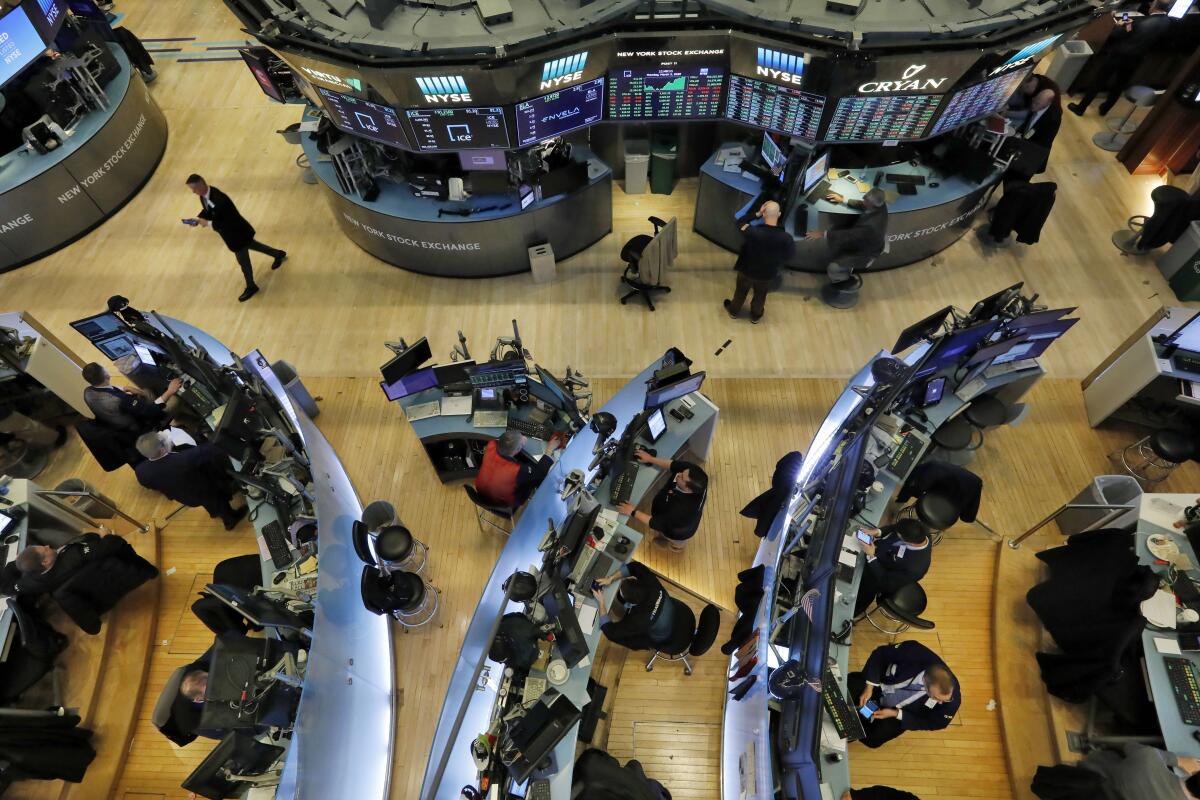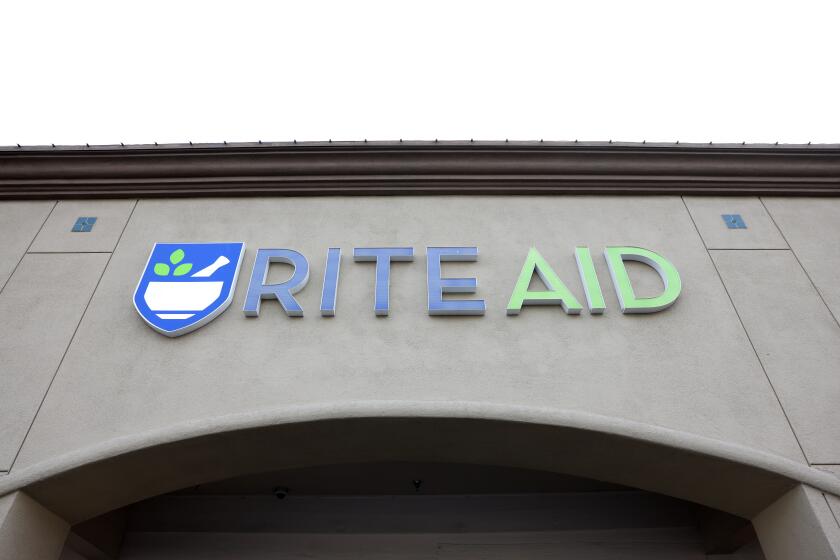Wall Street drifts and yields rise as U.S. shoppers show they’re still opening their wallets

- Share via
Wall Street drifted to a mixed finish Tuesday following the latest signal that the U.S. economy remains solid, though perhaps too strong for the Federal Reserve’s liking.
The Standard & Poor’s 500 index edged down by 0.43 of a point, which is well less than 0.1%, to 4,373.20 after flipping between small gains and losses through the day. The Dow Jones industrial average added 13.11 points, or less than 0.1%, to 33,997.65 and the Nasdaq composite fell 34.24 points, or 0.3%, to 13,533.75.
Financial markets have been shaky in recent weeks due to worries about war in the Middle East and its potential effect on oil prices. But those worries have receded a bit to put the focus back on what usually drives the stock market’s long-term movements: where interest rates and corporate profits are heading.
A report Tuesday showed that shoppers spent more at U.S. retailers last month than economists expected. That’s a signal of a healthy economy and likely a result of a still-solid job market, which should help support profits at companies.
The Federal Reserve left its key interest rate unchanged for the second time in its last three meetings, a sign that it’s moderating its fight against inflation.
But a too-hot economy could also give inflation more fuel and push the Fed to keep interest rates high to suffocate it. Such a move would hurt prices for stocks and other investments.
The Fed is trying to pull off a delicate balancing act in which it slows the economy just enough to drive down high inflation but not so much that it causes a painful recession.
Treasury yields in the bond market rose after the release of the report. The yield on the 10-year Treasury climbed to 4.83% from 4.69% late Monday.
A sharp jump since the summer in the 10-year yield has weighed on the stock market, as traders increasingly succumb to the Fed’s forecasts that it probably will keep rates high for a long time. The central bank has already pulled its main interest rate to the highest level since 2001 and is debating whether to increase it one more time.
High rates and yields hurt prices for all kinds of stocks, and they tend to hit particularly hard on companies bid up on expectations for growth far in the future or stocks seen as expensive. That’s often put Big Tech stocks in the spotlight, and a 4.7% drop for Nvidia and 0.9% slip for Apple were two of the heaviest weights on the S&P 500.
Ford Executive Chair Bill Ford calls on autoworkers to end strike, says company’s future is at stake
Ford Motor Co.’s Bill Ford called on autoworkers to unite and end a strike that he says could cost the company the ability to invest in the future.
Nvidia and other chipmakers were under extra pressure after the U.S. government broadened restrictions to stop China from acquiring advanced computer chips and the equipment to manufacture them.
Several big U.S. companies, meanwhile, were turning in mixed performances after their latest earnings reports.
Bank of America helped to lead the market with a 2.3% gain after it beat Wall Street’s profit forecasts for the third quarter. It benefited from higher interest rates, but Chief Executive Brian Moynihan also warned that Americans continue to slow their spending after burning through the savings they had built up during the pandemic.
Bank of New York Mellon rose 3.8% after it also reported stronger profit than expected for the latest quarter.
The broad expectation for companies across the S&P 500 index is that profits returned to growth during the summer for the first time in a year.
Wyndham Hotels & Resorts rose 9% after rival Choice Hotels International said it wants to buy the company for $90 per share in cash and stock, valuing it at $7.8 billion.
The two had earlier been talking about a possible deal, Choice CEO Patrick Pacious said, but Wyndham walked away after they were “in a negotiable range on price and consideration.”
Choice shares fell 6.8%.
Pharmacy chain Rite Aid says it has filed for bankruptcy as it carries out a restructuring plan in the wake of a settlement over opioid-related lawsuits.
In stock markets abroad, indexes generally moved modestly in Europe after rising more solidly across Asia.
Crude oil prices held somewhat steadier after swinging sharply in recent weeks on worries that war in the Middle East could lead to disruptions in supplies if it drew in Iran or other major oil-producing countries.
A barrel of U.S. crude for delivery in November was unchanged at $86.66 after bouncing between gains and losses through the day. and Brent crude, the international standard, rose 25 cents to $89.90.
“I wouldn’t say it’s in the background,” Andrew Lipow, president of Lipow Oil Associates, said about the war in Gaza’s effect on oil traders.
“I think they’re just waiting,” he said. “That’s the worry, that infrastructure does get impacted.”
AP writers Matt Ott and Elaine Kurtenbach contributed to this report.
More to Read
Inside the business of entertainment
The Wide Shot brings you news, analysis and insights on everything from streaming wars to production — and what it all means for the future.
You may occasionally receive promotional content from the Los Angeles Times.













